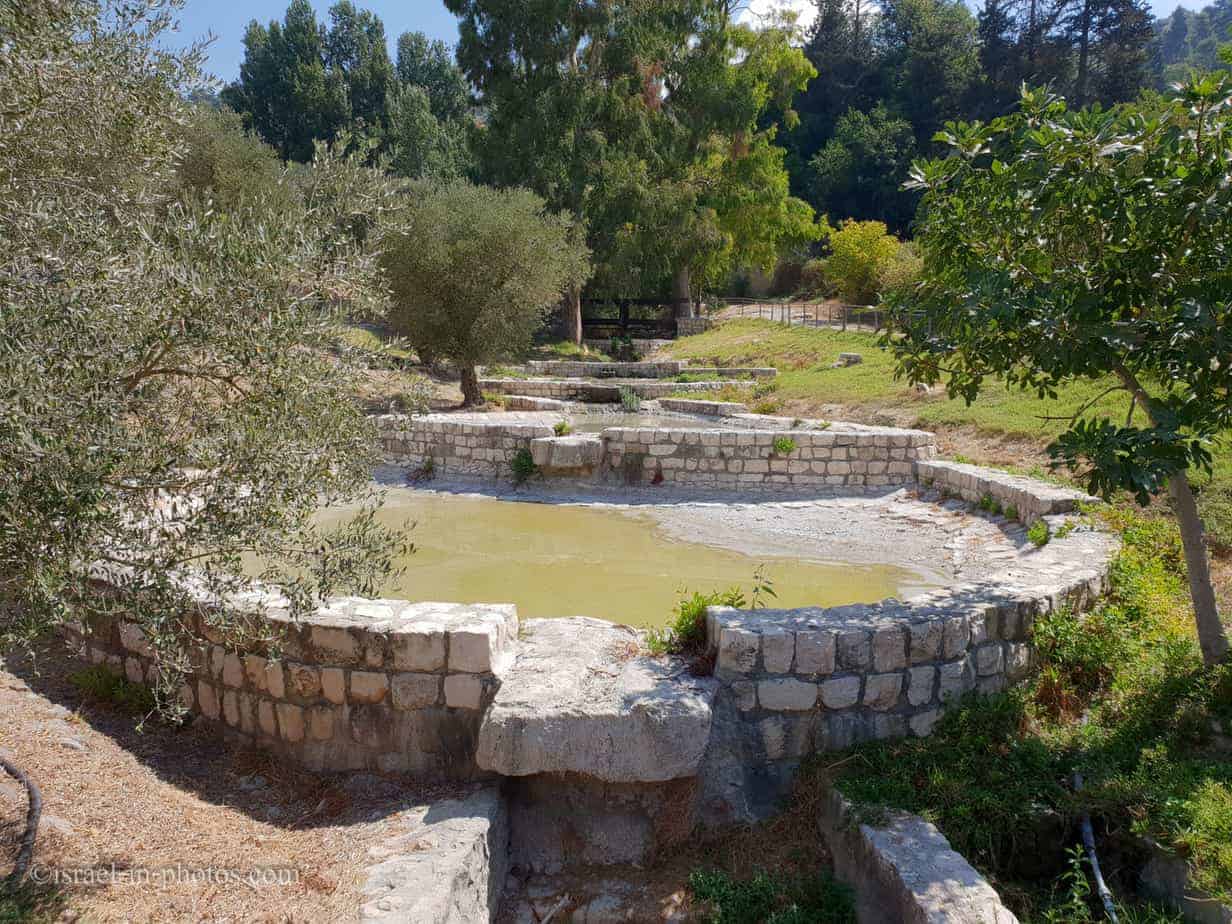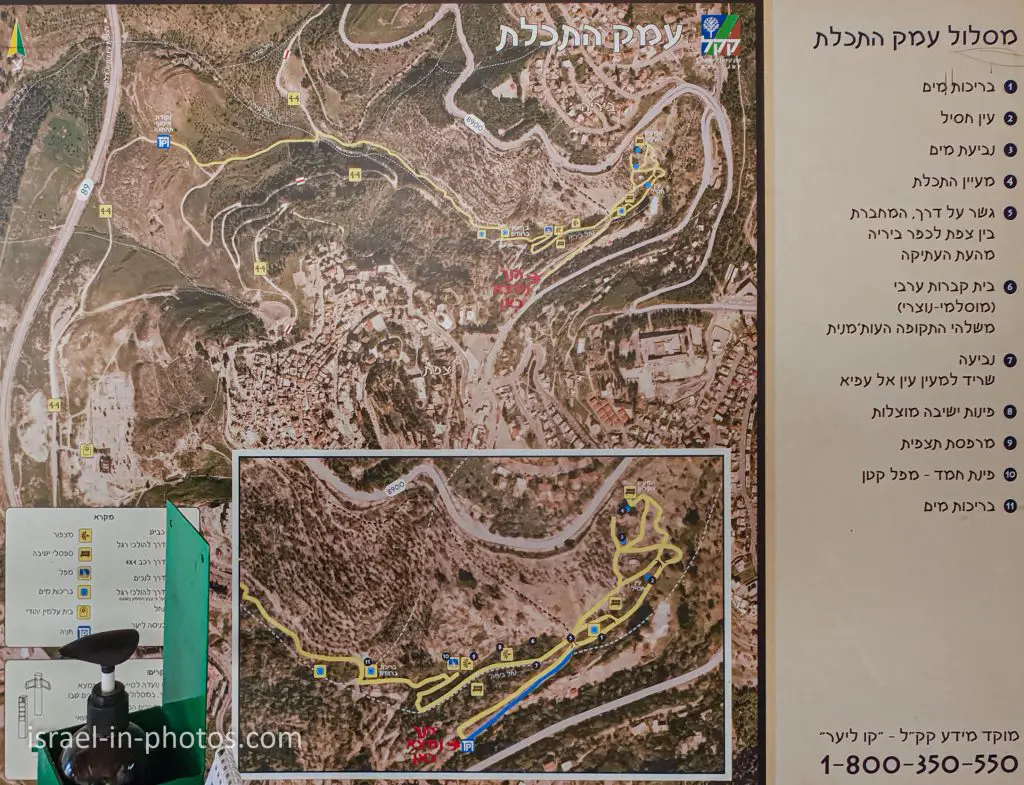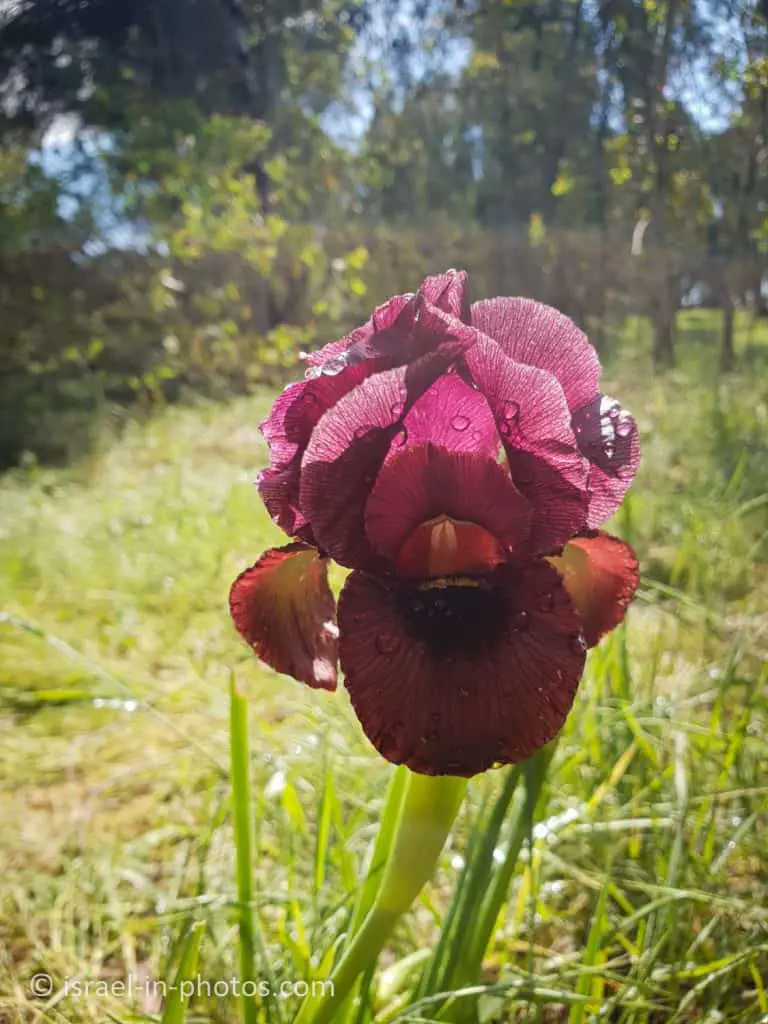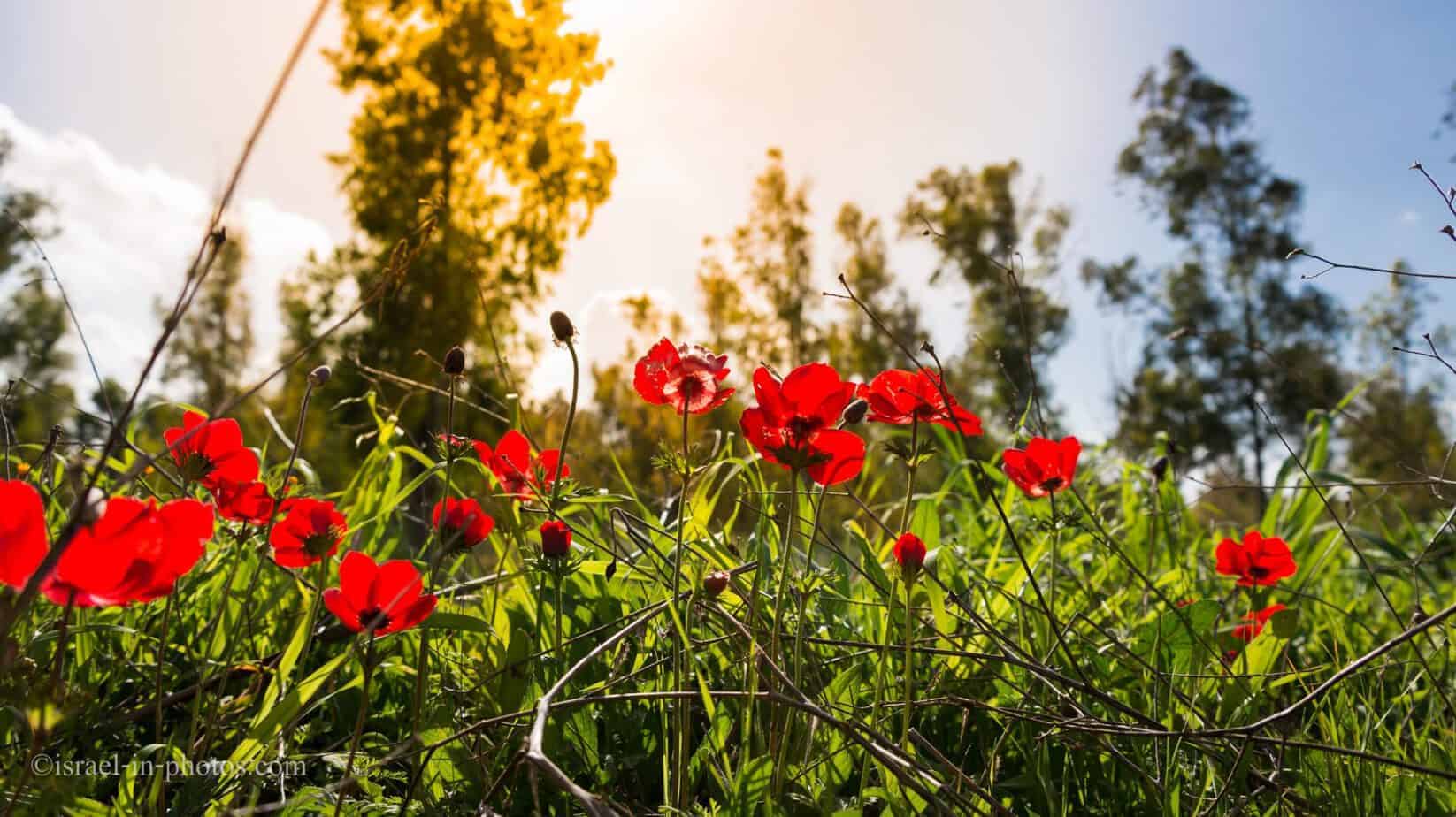Парк Голубая долина (Эмек ха-Тхелет), Цфат – Путеводитель
KKL-JNF недавно вновь открыл парк Голубой долины (Эмек ха-Тхелет) в Цфате. Здесь есть легкие маршруты для семей и более сложные для опытных туристов..
Оглавление
Карта
Парк Тхелет находится недалеко от Дерех Ха-Ацмаут 4, Цфат. А вот интерактивная карта этой местности:
Направления для водителей: Ссылка на Вейз и Ссылка на карты Google
Направления общественного транспорта: Ссылка на Моовит
Интерактивная карта местности:
А вот карта парка Тхелет:
Примечание: вы можете увеличить карту, щелкнув по ней.
Как добраться
Самый простой способ добраться - ввести в приложение для навигации Парк Голубая долина или Парк Эмек ха-Тхелет. А у въездных ворот есть бесплатная парковка..
Треки
Парк Голубая долина предлагает несколько пешеходных маршрутов.. Вы можете выбрать либо короткую петлю, либо долгую прогулку к нижней станции посадки (верхний левый угол на карте)..
| Название маршрута | Описание | Длина (км) | Заметки |
|---|---|---|---|
| Шорт-трек – северный участок | Этот круговой след проходит между точками 1 в 5. | 0.7 | Доступная тропа |
| Короткий маршрут – южная часть | Этот круговой след проходит между точками 5 в 11. | 1.5 | Доступная тропа до #9, а потом есть лестница. Используйте детскую переноску, если хотите дотянуться #10. |
| Долгий путь | Маршрут от ворот парка до места посадки (слева на карте). | 4.5 | Нижний участок этой тропы крутой и поэтому подходит только для подготовленных и опытных пешеходов.. |

Часы работы
Воскресенье – Четверг: 07:30 – 15:30
Пятница: 07:30 – 16: 00 (14:00 зимой).
Суббота: 07:30 – 18: 00 (15:30 зимой).
Примечание: хотя согласно официальный сайт, Парк Голубая долина закрыт по субботам., как вы видете, табличка на месте гласит, что они открыты. Кроме того, мы посетили в субботу.
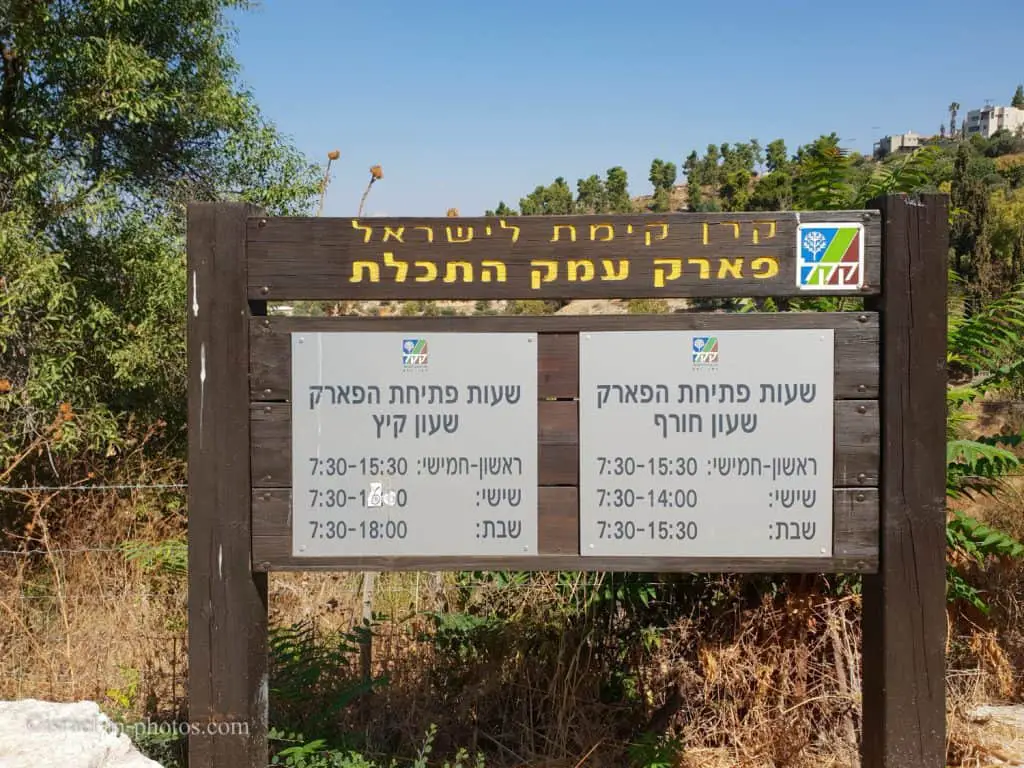
Входная плата
Бесплатно.
Контактная информация
Телефон: 1-800-350-550
О сайте
Парк Голубая долина простирается на 580 дунамы (прибл. 145 акров) на северном подходе к Цфату. Его источники и сады выходят на гору Мерон., который виден почти из каждого уголка этого парка, где олени, козерог, и антилопы пасутся среди тропинок. Дорожки разработаны KKL-JNF., работает совместно с муниципалитетом Цфат, и это партнерство также восстановило пружины, создание пулов, и ухаживал за садами. Парк позволяет жителям Цфата и его окрестностей наслаждаться природой рядом с домом., в то время как посетители со всей страны будут наслаждаться тихим отдыхом в лесу во время знакомства с городом каббалистов..
Примечание: если не указано иное, все цитаты были взяты из официальный сайт.
Бассейны
Во время нашего визита, мы начали с северного маршрута. А потом закончил южную тропу, Это означает, что мы закончили короткую тропу.

Туалеты и водопроводный кран можно найти возле точки разделения южного и северного маршрутов.. Кроме того, здесь же вы можете найти бассейны (отмечены как #1 на карте).
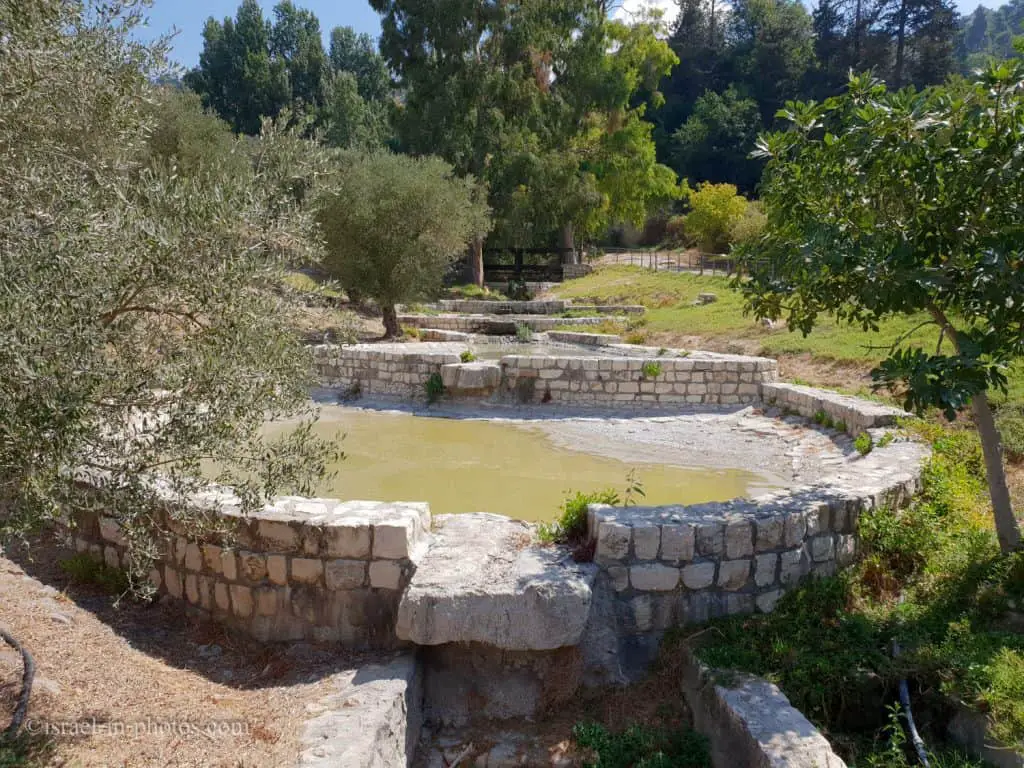
KKL-JNF создал два бассейна вдоль русла реки., и мы видели там уток.

Северный путь
Из бассейнов, идем по северной тропе и начинаем подъем.
Из бассейнов, поворачиваем направо по асфальтированной дороге, идущей параллельно Нахаль Бирья, который поднимается на склонах гор Ханаан и Бирья и стекает вниз по всей длине парка Голубая долина.. Он впадает в Нахаль Сечви, который является одним из притоков Нахаль Амуд.
Дорога проходит среди высоких серебристых тополей, которые летом создают приятно прохладные тенистые бассейны, а зимой сбрасывают красивые пожелтевшие листья..

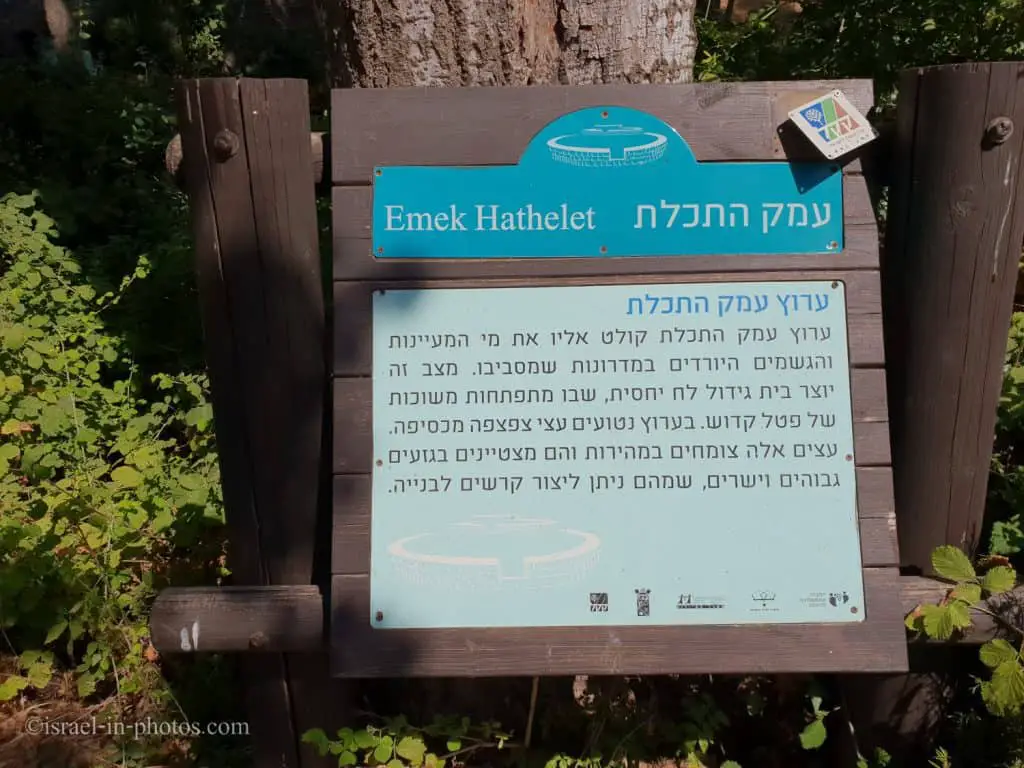

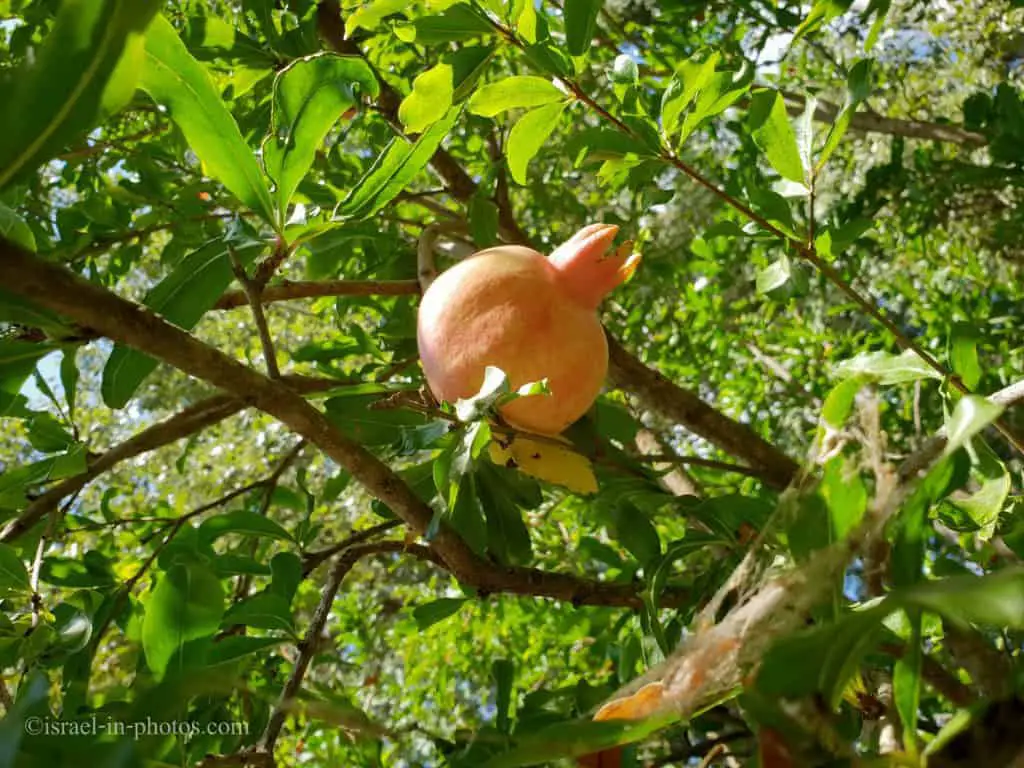
Голубой родник
Мы пошли по тропе к самой высокой точке (отмеченной как #4 на карте). И там, Вы можете найти источник, который назвал эту долину.
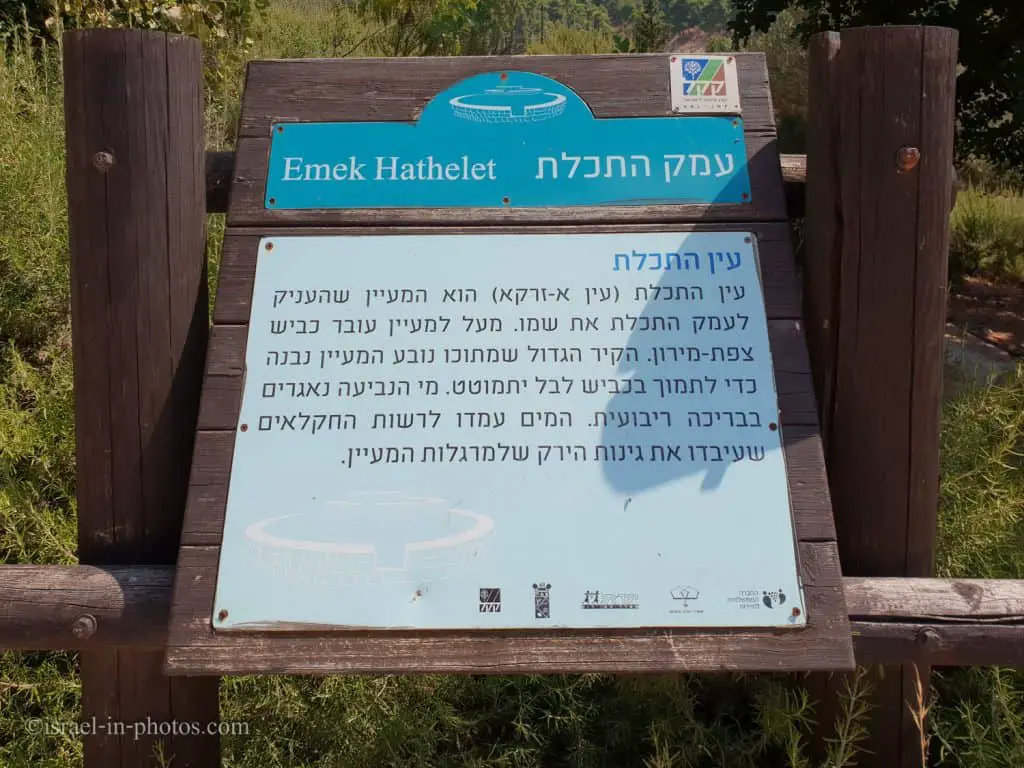
Здесь путь разделяется на две части, но любой маршрут приведет нас к следующей станции по пути, это Мааян Ха-Техелет («Голубая весна»). Небольшой туннель, который был вырыт рядом с тропой в какой-то момент в прошлом и который теперь выложен обтесанными камнями, был разработан для увеличения скорости потока пружины., и его вода была направлена в оштукатуренный бассейн, из которого она стекала на небольшие участки земли ниже. KKL-JNF восстановила бассейн и построила каменную стену на склоне над ним, чтобы предотвратить оползни или проседание шоссе Мерон-Цфат (Маршрут №. 89), который проходит рядом. Древние рожковые и фруктовые деревья, посаженные KKL-JNF у источника, завершают пасторальную сцену..


Мы шли вниз по склону к точке #2.


Родник Хасиль
Это маленькая весна, и увидеть его текущую воду можно только зимой.

Еврейское слово «хасил» - это название одного из видов саранчи, упомянутых в Библии: «Он отдал также урожай их кузнечику и продукты их труда саранче…» (Псалмы 78: 46). Это еврейское имя отражает звучание арабского слова «весна»., Эйн аль-Хасиль, что означает «Весна урожая». В прошлом, эта вода использовалась для орошения огородов.
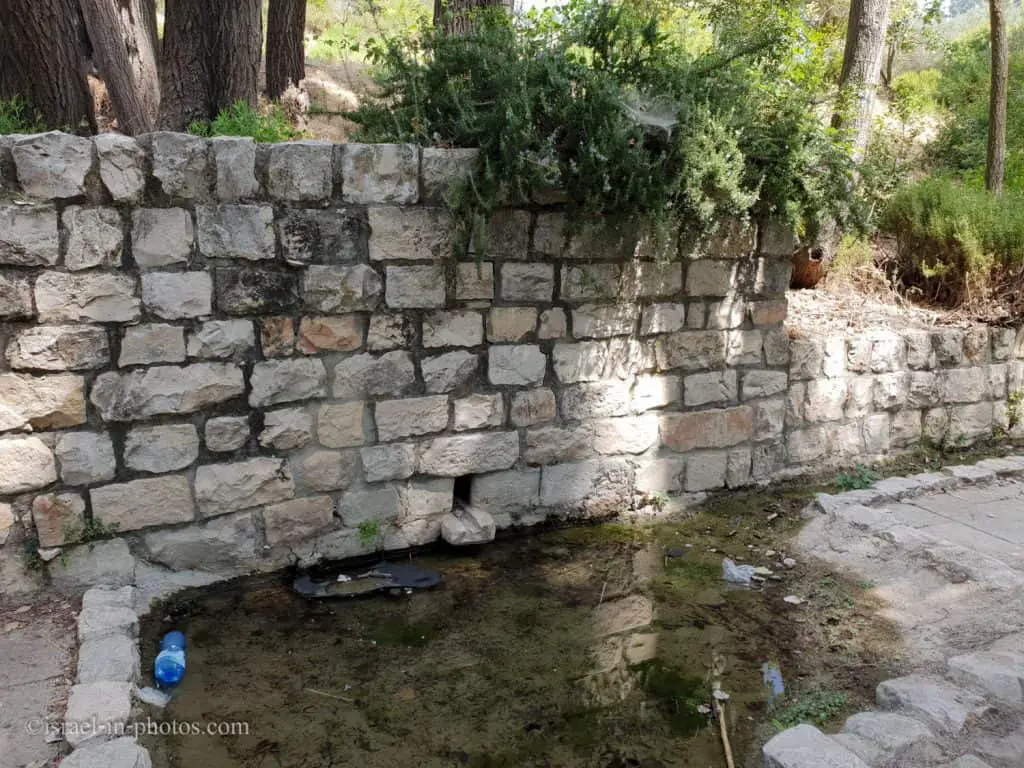
Продолжаем спуск к исходной точке, бассейны.


Южный трек
Из бассейна, мы продолжили спуск к точке #7.
Источник Аль-Афйа
Немного 200 метров дальше путь пересечен сеткой, под которой протекает канал, истощающий небольшой родник. Это все, что осталось от Эйн аль-Афья., которые когда-то возникли вокруг 100 метров в гору от этого места. Эта весна, чьи воды были известны в анналах Цфата своими лечебными свойствами, был разрушен в избытке энтузиазма при создании парка. Хотя теперь это прикрыто, его воды продолжают стекать под землю вниз по склону, прежде чем выйти в этой точке.


Точка обозрения
Наша следующая остановка будет в точке #9, смотровая площадка.
Рядом с дорогой, KKL-JNF создала тенистые зоны для отдыха, которые обеспечивают близкий обзор богатства растительности на берегу реки., включая ежевику, ивы, и фиговые деревья. Летом, берега покрыты цветущей мятой и ивовой травой. Короткая прогулка приведет нас к беседке, которая затеняет смотровую площадку, которая смотрит на запад, в сторону хребта Рамат Иехоярив., Мошав Мерон, и высокие пики (справа налево) горы Адир, Гора Хирам, и Гора Мерон.



Водопад
Мы спускаемся по лестнице и достигаем точки #10 – водопад.
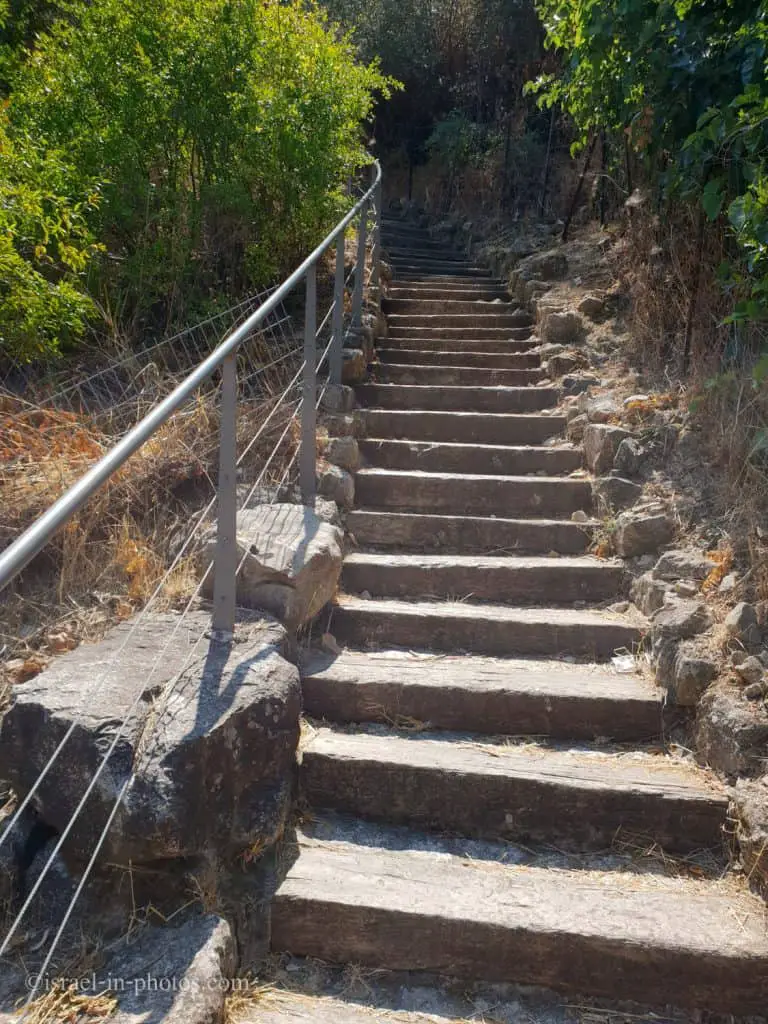

Примечание: внизу лестницы вы увидите развилку.. След продолжается налево. Но чтобы добраться до водопада, нам нужно сделать небольшой объезд. Поверни на право, и вы доберетесь до каскада через несколько минут.
Здесь мы выбираем правую развилку и круто спускаемся (берегитесь - зимой здесь может быть скользко!) К красивому месту, где река с небольшого водопада впадает в бассейн.. Края бассейна и стены водопада покрыты фиговыми деревьями и девичьими папоротниками.. Правая сторона тропы к водопаду влажная и стекает в канал, покрытый решеткой.. Источником этой воды является недоступный скрытый источник под названием Эйн Сис в честь стрижей (Сис Ха-Хомот на иврите), которые часто встречаются в этом районе.. В еврейском названии этих птиц есть что-то от арабского названия источника - Эйн Сайис., то есть, «Весна конюха».

Нижние бассейны
Возвращаемся к развилке, упомянутой выше, и продолжаем спуск по тропе, пока не дойдем до точки #11 – нижние бассейны.
Мы пересекаем небольшой мостик в тени эвкалипта и белых ив., что дает нам вид на речную растительность, и тропинка ведет к бассейнам, где гуляют утки и гуси. Весной, мы можем сидеть у бассейнов среди ковров полевых цветов. Склоны холмов вокруг нас покрыты терновником (Sarcopoterium spinosum) и усыпаны стеблями, несущими розовато-сиреневые цветы иерусалимского шалфея..


Как вы видете, даже летом в бассейнах немного воды.
С этого места, мы начали возвращаться к парковке. И в пути, мы видели мангуста и нубийского горного козла. Итак, это идеальное время, чтобы упомянуть о дикой природе.
Животные
В парке обитает множество животных, привезенных из других мест, которые теперь свободно гуляют по нему.. К ним относятся нубийский козерог, знакомый нам по крутым ландшафтам Иудейской пустыни и Негева., чьи изогнутые рога и козлиная борода (у самцов этого вида) мгновенно узнаваемы. Небольшое стадо пятнистых оленей (ось Cervus) бродит среди деревьев.. Летом у самцов отрастают разветвленные рога., что они сбрасывают, когда приходит весна.
Еще один рогатый обитатель парка - антилопа., дикий уроженец пустынь Северной Африки, где он находится под угрозой исчезновения.
Парк также является домом для австралийских эму., большая нелетающая птица, чем-то напоминающая страуса. Самка эму откладывает до пятнадцати яиц в одной кладке, но оставляет самцу сидеть на них и насиживать..

Когда приехать?
Благодаря своему расположению, Вы можете посетить его круглый год. Мы ходили летом, и было не слишком жарко. Но есть одно исключение, не ходи туда после дождя. Скалы и тропы будут скользкими.
Резюме
Парк Тхелет в Цфат прекрасное место, подходящее для коротких семейных походов. Вы увидите воду, растительность, и даже дикую природу. Кроме того, есть места, где можно устроить пикник.
Вы были в парке Тхелет в Цфат? Расскажите нам о своем опыте в комментариях ниже.
Это все на сегодня, и мы увидимся в будущих путешествиях!
Следите за обновлениями!
Для дополнительных точек интереса поблизости, смотрите Цфат.
Дополнительные ресурсы
Вот несколько ресурсов, которые я создал, чтобы помочь путешественникам:- Планировщик поездок с достопримечательностями и маршрутами - страница которая поможет вам создать идеальный маршрут путешествия.
- Какое лучшее время для посещения Израиля? Чтобы ответить на этот вопрос, мы учтем погоду, цены, каникулы, фестивали, и многое другое.
- Информация и советы для туристов в Израиле ответит на самые распространенные вопросы туристов об Израиле (в том числе о безопасности, паспорта, погода, валюта, опрокидывающийся, электричество, и многое другое).
- Национальные парки и заповедники Израиля включить полный список, Топ десять, карта, билеты (Израиль Пасс, Матмон, комбо), и кемпинги.
- Если вы ищете вещи, чтобы сделать, вот страницы для Иерусалим, Тель-Авив, Хайфа, Галилейское море, Акко, Эйлат, Назарет, Цфат, и Махтеш Рамон.

